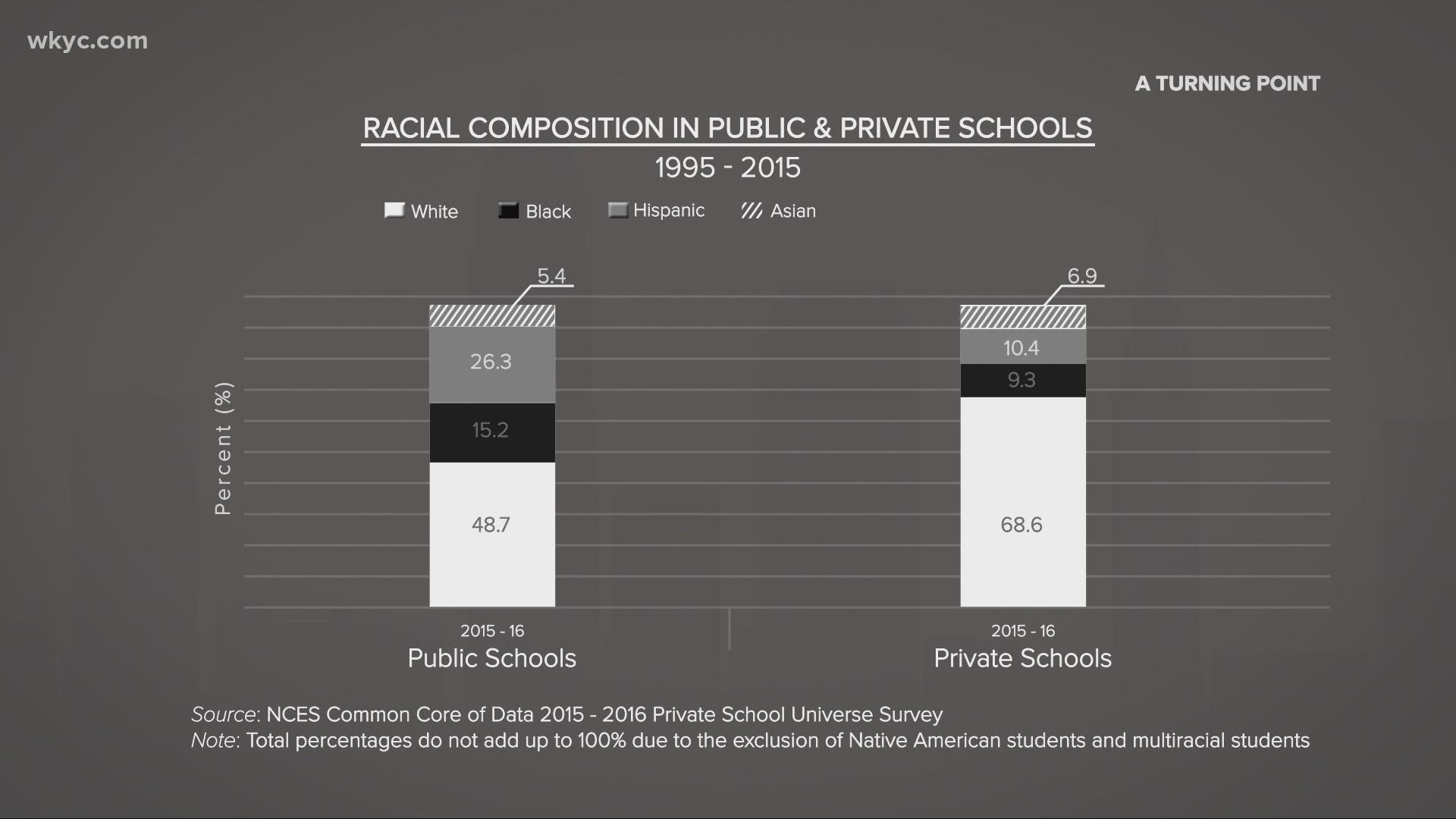CLEVELAND — The catalyst for self-reflection and change can come from any source.
For example, back in the mid to late 1980s, Andrew Lefkowits was one of a small handful of white kids at his school. He says back then, going to a public school in Denver with classmates of different races wasn't always an easy experience.
However, it was one he was thankful for, because it prepared him for the real world.
"It gave me a different sense of the world, I think," Lefkowits said. "I recognized, as I entered spaces in the future, a comfort that I had being around people who were different from me."
Watching an old video of himself performing in his elementary school talent show also made him think of his young daughters.
"That was a moment where I was like, 'Oh, I need my kids to be in an environment like that.'"
Modern-day integration and obstacles
Lefkowits connected with Integrated Schools, a national grassroots movement started by the late Courtney Mykytyn. It is an organization where white and/or privileged parents voluntarily send their kids to schools with a student body of mostly Black and brown students. These parents say they're prioritizing integration as a way to advance equity in education for the well-being of all children and American democracy.
"We live in a multiracial democracy," Emily Brown, co-leader of the newly formed Integrated Schools chapter in Columbus, shared. "We want everyone to be able to work together to solve common problems that we all have, and I think there's a lot better chance of that happening if all of our kids go to school together."
Brown sends her children to their neighborhood public school. Although she says her family lives in a mostly white community, the school has a majority of Black and brown students.
"Many people in our neighborhood send their kids to private schools," Brown explained.
What's the problem? In her book "The Sum of Us," Heather McGhee writes that the boom in private schools was a reaction to school integration in the 1950s and '60s after the landmark Supreme Court case Brown v. Board of Education. That case ruled racial segregation in public schools unconstitutional.
McGhee cites research showing white students now make up 69% of K-12 private school enrollment and the majority of public school students in the U.S. are now children of color. Both McGhee and parents in the Integrated Schools movement argue an obstacle to modern day integration is the narrative about "good and bad" schools.
"When you think like, 'You know, close your eyes and imagine a good school,' what you imagine is a largely white student body, lots of money, lots of resources," Lefkowits said. "That is the vision of 'good school' that culture perpetuates."
The problem with calling schools 'good' and 'bad'
In a webinar from 2020, Lefkowits — who is now on the Integrated Schools leadership team and hosts their podcast — explained how white parents began to use race-neutral language to maintain white supremacy and segregation in schools after Brown v. Board.
"These parents recognized that the explicitly racist language that they had been using wasn’t going to work anymore," Lefkowits shared. "White parents stopped saying, at least out loud, that 'I don't want my kids to go to school with Black kids. They started saying things like "'I want my kid to learn a curriculum that is in line with my values.'"
Lefkowits goes on to explain how over the years the race-neutral language was honed and perfected to the point where parents would unknowingly repeat it without having to face the racism the narrative was built upon. Lefkowits admits he was once one of those parents.
"I had bought into this idea of risk. This idea that I was going to set my kid up for failure, that I was going to harm them in some way," he said. "So we thought, 'Well, we better do what everybody says we should do, which is go to the good school.'"
Lefkowits considered what he was learning about integration and went on to pull his daughter out of the so-called "good" school, before enrolling her in the one he attended as a child.
"When you look on any website that tries to rate schools, everything would say we moved from a great school to a terrible school," he shared. "That was not at all the experience we had. I mean, my kids are thriving. They are learning, they are growing."
The hope is that the sight of children from different races growing and learning in school together today, will be the catalyst for producing positive change in the world tomorrow.
Watch our full "Turning Point" special in the player below:

